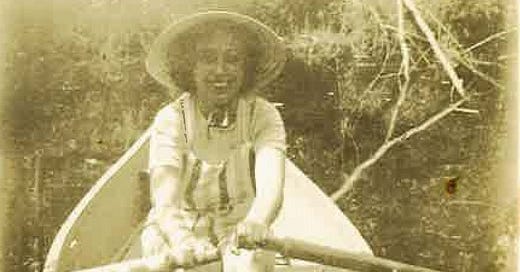Memoir Is More Forgiving Than Biography
Fuzzy facts provide one more reason to write your story from the first-person perspective.
I was reading a recent book review of a biography—not a memoir—of Dr. Mary Putnam, a pioneering doctor in women’s medicine, when a single criticism struck me. Writing in The New York Times Book Review section, the reviewer noted that the author “indulges in sentimental moments of seeming speculation.” This is why memoir is more forgiving than biography—in memoir, speculation is accepted as accurate enough, and if anyone has the right to be sentimental, it’s a memoir author.
Biography is History
The sentence the reviewer quoted was: “Sometimes while they worked, their hands touched, causing Mary to feel electrified.” The author created this visual in order to bring to life a courtship, explaining how Mary Putnam came to marry a fellow scientist at a time when women in a serious profession like medicine were commonly considered too masculine for a man to marry. Is it a stretch to think that a brush of their hands might have occurred as they were in close proximity in the lab together, working toward a common goal and appreciating each other’s scientific mind? Not at all.
But did it actually happen? Probably not, but who knows? In a biography, though, I agree with the reviewer that the description feels contrived. There’s no footnote to credit a source for this “fact.” There’s no descendant or witness to interview. The author can’t know what happened between the two people, and the reader understands this.
Memoir is True-ish Story
Memoir carries different rules. You may conjure up out of your imagination the very same scene about a relationship you had, with no memory of hands touching or not touching. But when you write that your hands touched and sent electricity flowing through you, the reader accepts it—even appreciates that you’ve included such intimate detail.
This is the beauty of memoir. It must be accurate in dates and in the facts of the events, and the author must present the information in a sincere way. But your descriptions of little backstory events can include a blurriness of accuracy. You’re not expected to remember every aspect of a setting or encounter.
Maybe the lady at the counter didn’t say the exact words you quote in chapter two, but your account of the exchange still captures the intent of her words. Perhaps you’re not sure whether it was your brown jacket or your blue one that you had on the day your dad walked out, but you know you were wearing one or the other so you just choose one because the narrative becomes more vibrant when you include the jacket’s color. And your hands probably touched as you flirted with your lab partner senior year of high school, but you can’t be sure. You just like the image so you throw it in there.
In memoir, that’s all okay. In a biography, it’s cheesy, “indulgent” as the book reviewer calls it, and insulting to the reader. Isn’t that funny? As a memoir author you can get away with a lot more, and you should try. Your memoir should read more like fiction than like history, whereas a biography, even with elements from fiction such as a lot of dialogue, still is meant to be taken as a historical account.
Stick to As Much Truth as Possible
That doesn’t mean everything is loosey-goosey in your memoir. It’s still easy to alienate readers when your story develops a feeling of falseness. So follow a few principles:
Don’t exaggerate! If you say that your mom hit the city street at a speed of 100 miles per hour, it doesn’t ring true. Either refer vaguely to a “high speed,” or you can say it felt to you as if you were moving at 100 miles per hour. Better yet, find a creative way to describe a child’s impression while riding in a fast-moving car.
Keep any fact-fudging believable. Beyond just exaggeration, everything you contrive must sound at least plausible. Going back to the example of the lady at the counter, the conversation has to be close enough to the truth to sound as if it could have taken place. Let’s say I want to write a chapter about my mother. The photo above is of my mom attending a summer resort before she was married. I have little idea what she did there, but owning a picture of her paddling a canoe gives me a point of accuracy to cite.
Stay consistent. One of the biggest pitfalls in writing a memoir is letting your information clash—not keeping your facts straight. If chapter three takes place in 1967 and mentions that you spent your summer with your eight-year-old cousin, chapter six can’t have the same cousin coming home from the army in 1973.
Fact-check what you can. Dates, names, spellings, street names—was it a road or an avenue? Anything the reader might know or can google is something you should check before you get to the final manuscript. If you visited western Pennsylvania, the city is Pittsburgh with an “h”; if you were in Kansas, it’s Pittsburg, no “h.”
But when you tell your own story, you are the number-one source for facts. You’re not only the author but also the main character. The reader trusts you to tell the truth about your life—or a version that captures the truth in spirit.






Really enjoyed this read. And agree with everything you say :) Thank you